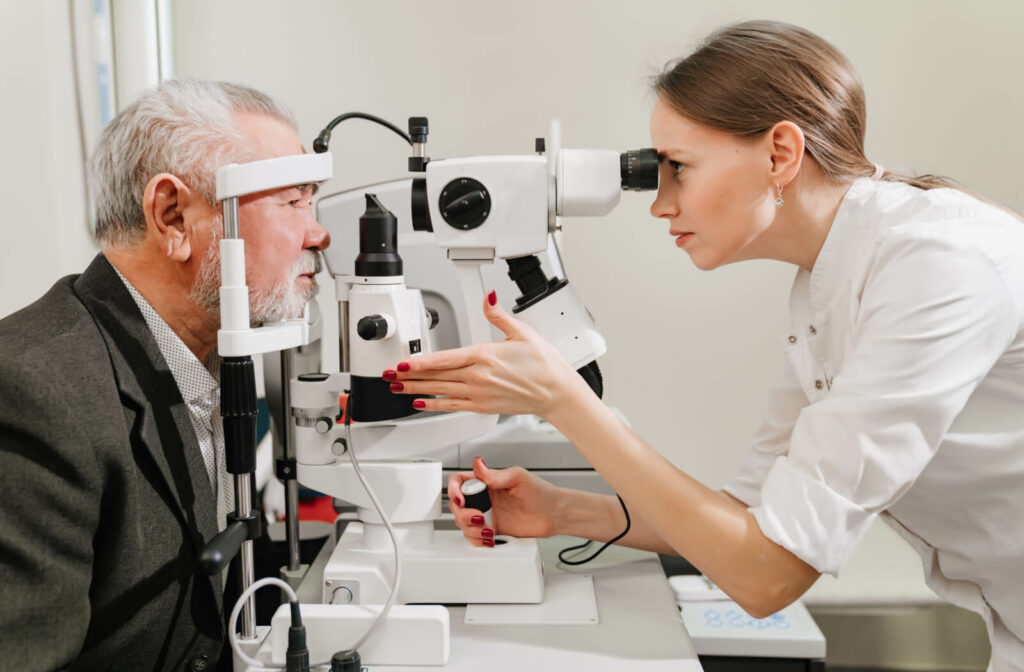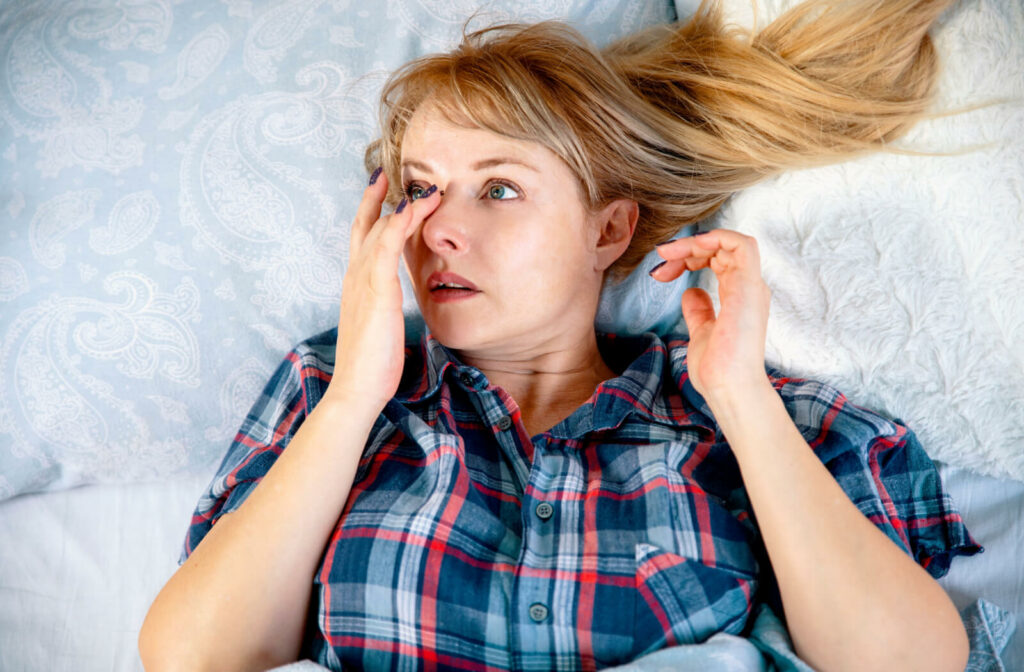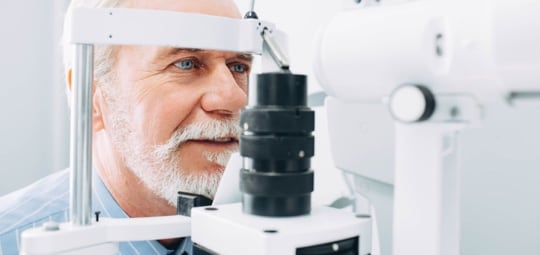Waking up with a gritty, burning sensation in the eye is a surefire way to make a morning more difficult than it has to be. If you experience this most morning, you’re probably dealing with dry eye syndrome.
Dry eye syndrome, also known as dry eye disease or simply dry eye, can cause discomfort and feel like sand behind your eyelids. Many different medical or environmental factors can cause it. This condition affects millions of people annually; fortunately, many options are available to treat it.
If you’ve recently noticed you’re experiencing this sensation, schedule an appointment with your optometrist and ask about treatments for your dry eyes.
What Is Dry Eye Syndrome?
Dry eye syndrome is best described as a gritty, burning, or sandy sensation behind the eyelids, causing irritation or discomfort. Though many potential causes for dry eye syndrome exist, all are related to your natural tear production.
Every time you blink or close your eyes, your eyelid naturally spreads a layer of tears over your eyeball. These tears keep your eyes hydrated, lubricated, and help with oxygen absorption to the eye.
These tears are made up of 3 layers:
- Water layer—this layer hydrates the eye naturally, washes away dust and debris particles, and helps prevent infections by repelling bacteria.
- Oil layer—this layer smooths the surface of the tear and prevents the tear from evaporating too quickly.
- Mucus layer—this layer disperses the tear evenly and keeps it connected to the surface of your eye.
When there’s a problem with one of these layers, it can lead to issues with your tear production. They may start evaporating too quickly, or your eye might not be producing enough tears to properly hydrate your eye. Whether your eye doesn’t produce tears of a high enough quality or simply doesn’t produce enough tears, any disruption to your tear film can result in dry eye.

What Causes Dry Eyes?
Dry eye syndrome has many potential causes. Some medical causes of dry eye syndrome include:
- Diabetes: More than 50% of people with diabetes experience dry eye syndrome at some point in their life. This is primarily caused by the effect of diabetes on the lacrimal gland in the eye (the part of the eye responsible for tear production).
- Nocturnal lagophthalmos: A condition where you don’t fully close your eyes while sleeping.
- Sjögren’s syndrome: A condition where your immune system begins attacking healthy organs and tissue in your body, leading to dry eyes, mouth, and other potential damage to your body.
- Thyroid problems: The thyroid could be producing either incorrect hormones or differing levels of hormones.
- Change in medication: If you’ve recently changed any medication you’re taking, you should speak with your doctor or pharmacist to see if this is causing your dry eyes, and if there’s an alternative.
Dry eyes don’t always mean that there is a medical concern—there are also many environmental factors that could be contributing to dry eye syndrome. These can include:
- Too much screen time: Screens and other sources of artificial light expose your eyes to a wavelength known as blue light. Too much exposure to blue light can lead to difficulty sleeping or eye strain.
- Humidity or different airflows in your environment: Your eyes may be struggling to adapt to the environment around you. If the room or area is too humid, dry, or dusty, your eyes have to work harder to adjust accordingly.
- Contact lenses: Some contact lenses can cause dry eye syndrome due to their design. If you wear contact lenses and experience dry eyes often, you should speak with your optometrist to see what options are available to help.
What to Do About Dry Eyes
Since dry eyes can be caused by so many different factors, it’s important to go in for regular comprehensive eye exams. At an eye exam, you can speak with an optometrist about what may be causing your dry eye syndrome, and they can explain the different treatments available for dry eyes.
Schedule an appointment at Orillia Optometry to speak with one of our professional team members today and get a diagnosis for your dry eye syndrome.
















